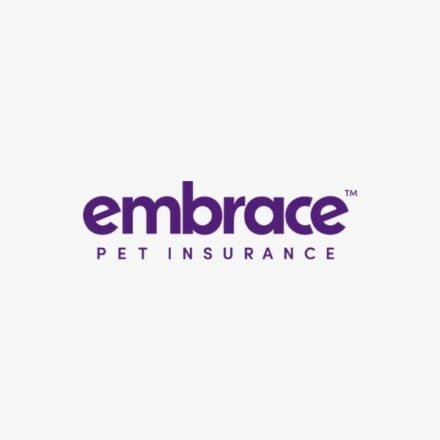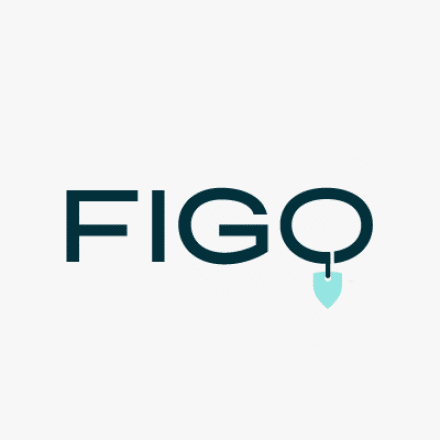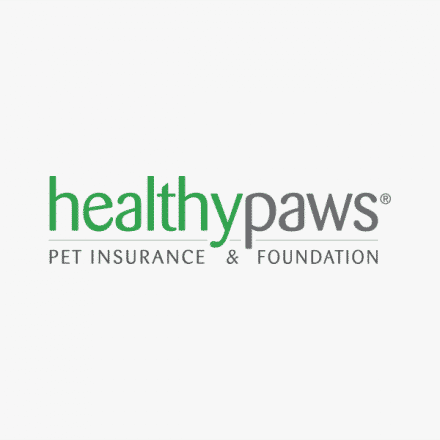Dachshunds, also known as weiner dogs, are a smaller breed with many potential health issues. The best insurance coverage for a Dachshund may not be the best option for a larger dog breed. This is why we’ve dedicated this insurance guide to Dachshunds.
This breed has been increasing in popularity over the past few years, making it into the top ten breeds in the past two years. As with all breeds, each dog is unique, and your budget isn’t the same as your neighbor’s. So we’ve compiled a list of health insurance considerations to find the best fit for your needs.
At less than nine inches tall and weighing up to 32 pounds, this cuddly breed is just as easily susceptible to accidents and illnesses as any other breed. And like all other purebreds, they are prone to more health concerns than mixed breeds, making pet insurance an excellent investment.
At A Glance

Best
Overall

Best For
Older Dogs

Best For Bilateral Conditions
Note: Clicking the above links take you to each company’s website to learn more and get a quote. If you make a purchase, we earn a commission at no additional cost to you.
Is Pet Insurance Worth It?
The short answer is yes. A survey by Liberty Mutual Insurance states that 63% of pet owners couldn’t afford unexpected medical care for their pets. Not only does pet insurance allow you to choose the best medical treatment for your pet, but it also provides stability for your finances.
The key thing to remember is that you need to sign up for pet insurance before an emergency arises. You cannot count on coverage for your Dachshund’s pre-diagnosed health issues. So it’s crucial to get your dog covered as soon as possible.

Common Health Issues In Dachshunds
Dachshunds generally live 12-16 years. But like all purebreds, they’re more predisposed to specific health concerns due to genetics. There’s no certainty in whether your dog will suffer from none, some, or different issues altogether. However, the health issues below can give you an idea of what to look for regarding symptoms and insurance coverage.
Intervertebral Disc Disease (IVDD)
IVDD, also referred to as a slipped or herniated disc, is a condition in which the discs between the dog’s vertebrae move or bulge into the spinal canal. This can cause extreme pain, nerve damage, and even paralysis. Dachshunds are especially vulnerable to IVDD because of their disproportionately short limbs and long backs.
Diagnosis and treatment for IVDD can be extremely costly. Potential costs include X-rays, CT (computed tomography), MRI (magnetic resonance imaging), pain management medication, surgery, frequent check-ups to assess condition, physiotherapy, hydrotherapy, hospital stay, and more. After testing and treatment, you could be facing $3,000 to $8,000 in vet bills.
Canine Diabetes Mellitus (DM)
Diabetes mellitus is also called sugar diabetes or insulin diabetes. Dachshunds can get Type I (where the pancreas produces too little or no insulin) or Type II diabetes (where the pancreas makes insulin, but the body’s cells don’t respond to it). Both types require regular insulin injections to help stabilize their blood glucose.
Diagnosing your Dachshund’s diabetes generally includes a urinalysis. Treatment includes daily management by you, including insulin injections, exercise, and diet. Insulin can cost $150 or more per month, plus you’ll be visiting the vet more often, and your dog may require a special diet. All of which can result in more money out of your pocket.
Epilepsy & Seizures
Epilepsy is an inherited disorder in which your dog experiences uncontrolled bursts of electrical activity in the brain, which causes seizures. Medication is often prescribed to dogs with epilepsy to help control seizures. Unfortunately, many of those medications can cause serious side effects for some dogs. And even with medication, 30-40% of dogs continue having seizures. CBD (cannabidiol) is effective in humans, and dogs may benefit from its use. Check with your vet to see if it might help your canine.
Depending on the drug choice, you could be facing around $500 a year or more on medication alone. Initial diagnostic testing is also an expense to consider, adding to your vet bills.
Progressive Retinal Atrophy (PRA)
Progressive retinal atrophy is a hereditary disease that causes the slow progression of blindness. PRA is inherited from both parents, and at-home DNA tests can identify the PRA mutation (having the mutation doesn’t mean your dog will develop PRA, but they’re at an increased risk). Unfortunately, Dachshunds are on the list of unlucky breeds that are predisposed to PRA.
You may be referred to a veterinary ophthalmologist for a PRA test called an electroretinogram (ERG), costing around $400. Genetic testing may also be ordered for an additional fee. Unfortunately, there’s no treatment for PRA. However, diagnosis can be costly, and adjusting your dog’s environment by putting up gates, fences, etc., can add up.
Bloat
Canine bloat is also known as gastric dilation-volvulus or gastric torsion. This life-threatening illness occurs when a dog eats too much or too fast. A buildup of gasses causes the stomach to blow up like a balloon and twist, causing the blood flow to the stomach to be cut off. If left untreated, it can result in death within hours.
Because bloat requires immediate medical treatment, your vet bill can easily reach $3,000 or more. Your dog’s medical care may include an emergency vet visit, shock treatment, sedation, surgery, overnight stay, follow-up exams, and more.
Dental Disease
Smaller dogs are at an increased risk for dental disease than larger dogs. This is because of their smaller mouths, which means their teeth are more confined and can lead to gum disease and decay. Establishing a dental cleaning routine for your Dachshund is imperative to reduce the risk of dental disease.
Dachshunds are prone to periodontitis, endodontics disease, tooth extractions, and overbites. None of which are immune to high vet bills. The average dog dental cleaning costs between $300 and $700. A dental disease diagnosis can cost over $1,000, depending on the severity and treatment required.
Considerations When Choosing An Insurer
There are dozens of companies to choose from, but their coverage isn’t the same. Having a multitude of options is nice, but it can make it challenging to decide.

Age Restrictions & Waiting Periods
Most pet insurance companies have a minimum age requirement (typically between six and eight weeks old) before allowing you to enroll your pet. And some companies cap the maximum age for new enrollment of older dogs (14 years old is the most common, although it’s only a few companies). Additionally, some companies may exclude specific conditions from coverage if your pooch is above a certain age (e.g., hip dysplasia, cruciate ligament surgery, and orthopedic conditions).
All providers have waiting periods, which are short time frames at the start of the policy until your pet’s condition is eligible for reimbursement. Keep in mind that any pre-existing conditions, accidents, or illnesses diagnosed or showing symptoms during the waiting period are excluded from coverage. The average waiting period for illnesses is 14 days and for accidents is less than five days.
Coverage Type
There are two types of insurance coverage to choose from:
- Accident-Only – These policies offer coverage for accidents (e.g., torn ligaments, broken bones, etc.), so basically any sudden physical injury. Accident-only plans are typically more affordable than accident and illness policies. This can be a good option for a pet with many pre-existing conditions.
- Accident and Illness – These policies are the most popular because they cover both accidents and illnesses (i.e., cancer, arthritis, allergies, etc.), including most unexpected medical expenses. Because pre-existing conditions aren’t covered by any provider, it’s crucial to sign your pet up for coverage as early as possible.
Some companies also offer a wellness plan (aka preventative care plan) during the enrollment process. This commonly covers routine vet expenses (i.e., annual exams, spay/neuter procedures, vaccinations, etc.) but varies by provider. It’s typically available as an add-on to an accident-only or accident and illness policy, but some companies allow you to purchase it without an insurance policy. This add-on coverage isn’t technically an insurance product.
To find the best option for your Dachshund, you need to consider what type of coverage you need and your budget.
Premium: Deductible, Reimbursement & Payout Options
The fee you pay for your Dachshund’s pet insurance coverage is called the premium and is usually paid monthly or annually. According to NAPHIA (North American Pet Health Insurance Association), the average monthly premium for an accident and illness insurance policy in the U.S. in 2022 was $53.34 for dogs. Of course, this varies for every dog and situation, including yours, so be sure to get multiple quotes from top-rated companies.
Pet insurance companies calculate premiums using several factors: breed, zip code location, age, gender, pre-existing conditions, deductible, reimbursement percentage, and payout. The beginning of the list is self-explanatory, you have a Dachshund, and you know your zip code, your dog’s age (or best guess), gender, and medical history. But what is a deductible, reimbursement, and payout?
- Deductible – The money you have to pay before your policy begins to reimburse your submitted claims. This typically resets each policy period (annually). However, some companies have per-incident deductibles, so you must pay this amount each time your dog suffers a new condition. Each company may have its own spin on this, so be sure you understand your policy because annual vs per-incident deductibles can impact the amount of money you’re expected to pay.
- Reimbursement – This is the percentage of a claim that you’re eligible for repayment by the company after you’ve paid your deductible. The most common reimbursement options are 70%, 80%, and 90%, but some companies offer other choices or restrict some selections based on your pet’s age or location.
- Payout – The maximum amount a provider will reimburse during the policy period. Lower payout limits mean you may be responsible for more costs if your pet has expensive vet treatments.
Many companies allow you to customize your plan to best fit your budget. For example, a higher deductible, higher reimbursement, and lower payout will lower your premium due. However, it’s crucial to find a balance between what your budget allows and the worst-case scenario if your Dachshund’s health takes a turn for the worst and you have several vet bills that require payment.
Exclusions
Exclusions refer to the conditions that are not covered by your policy but are outlined in your documents as “exclusions”. This can include pre-existing conditions, hereditary disorders, musculoskeletal disorders, specific dental treatment, and more.
Dental coverage is probably the most significant exclusion for most pet insurance providers that’s a primary health concern for Dachshunds. Some providers have limitations or exclusions for gum disease, tooth extraction, endodontic disease, and developmental abnormalities.
Another note is that a few companies require additional waiting periods for orthopedic conditions, such as IVDD. Because Dachshunds are at an increased risk for IVDD, be sure you understand any additional restrictions for this condition. For these reasons, it’s crucial that you thoroughly read and understand your policy.
Who Offers The Best Policy?
Below are our top pet insurance picks for Dachshunds based on their breed-specific needs. And, once you are ready, we’ve made a free quote form that provides customized policy quotes from top pet insurance companies when you fill in your pet’s details. By entering your pet’s specific characteristics, you can get a better understanding of the coverage needed.
Best Overall Pet Insurance For Dachshunds
Embrace

- Premium reduces by $50 per year if no claims are made
- Covers curable pre-existing conditions, dependent on evaluation
- Exam fees included in all policies
- Offers coverage for behavioral therapy and training
- Dental treatment included
Embrace may be the best pet insurance for your Dachshund because of its detailed dental coverage, something that your pooch is likely to need. Embrace’s Wellness Rewards offer an allotment for dental cleanings and its accident and illness policy offers coverage for non-routine dental treatment, gum disease, tooth extractions, endodontic disease, developmental abnormalities, and trauma to the teeth, face, and jaw. Dental coverage like this is very rare in the pet insurance industry.
In addition to its thorough dental coverage, Embrace also has few exclusions and offers coverage for items often neglected by other providers, including behavioral therapies, alternative/holistic therapies, and exam fees. Claim processing and repayment are among the fastest compared to other companies, and waiting periods are reasonable.
However, there is a six-month waiting period for orthopedic conditions, including IVDD. But, you can request to have this decreased to a 14-day waiting period by having your vet examine your dog and fill out a waiver stating that your pup’s bones, muscles, limbs, spine, etc., are all in a healthy state.
Best Pet Insurance For Older Dogs
Pets Best

- No age limits or restrictions
- Thorough coverage
- Some of the lowest prices in the industry
- Offers an Accident-only plan
Best Insurance For Bilateral Conditions
Trupanion

- One of the only companies with no bilateral exclusions
- Claims can be paid in less than 5 minutes via Trupanion Express
- 90% reimbursement and unlimited payouts for all plans
- Offers enrollment from birth
Additional Good Options
Figo

- Excellent value for money
- Offers options for 100% reimbursement and unlimited annual payouts
- Diminishing deductible decreases by $50 each year the policyholder is claim-free until it’s $0
- Coverage includes age and weight-related concerns and hereditary and chronic conditions
Healthy Paws

- Unlimited annual and lifetime payouts for all plans
- Fastest claim payout, on average, compared to others
- Excellent value and competitive price
- High customer satisfaction ratings
Lemonade

- AI-driven claims process
- Not available in every U.S. state
- Ability to bundle with homeowners or renters insurance policies
- Optional wellness coverage
How To Save Money
Some Dachshund parents can save money on insurance policies if the following circumstances are met.
Pay Annually
Most insurance companies offer two ways of paying your premiums, either monthly or annually. In many cases, transaction fees are added to each bill. Therefore, you can minimize transaction fees if you pay your premium annually.
Multi-Pet Discount
Many pet insurers offer multi-pet discounts for owners who take out several policies for their pets. Depending on the company, you may get up to a 10% discount on each pet’s premium, amounting to significant savings. Some companies only offer multi-pet discounts on additional pets (not the first), so be sure to clarify this point before enrolling in a new policy.

Final Thoughts
As you can see, investing in insurance for your Dachshund is worthwhile. The premium often deters pet parents, but when you consider the costs associated with common vet bills for this breed you realize it’s a more budget-friendly option. You will also have peace of mind knowing that you’ll never be faced with choosing between your wallet and your best friend’s health.
No matter the policy you choose, remember to read the fine print to fully know and understand your coverage and limitations. If you’re unsure about something or have questions, give the pet insurance company a call or speak with your vet.





